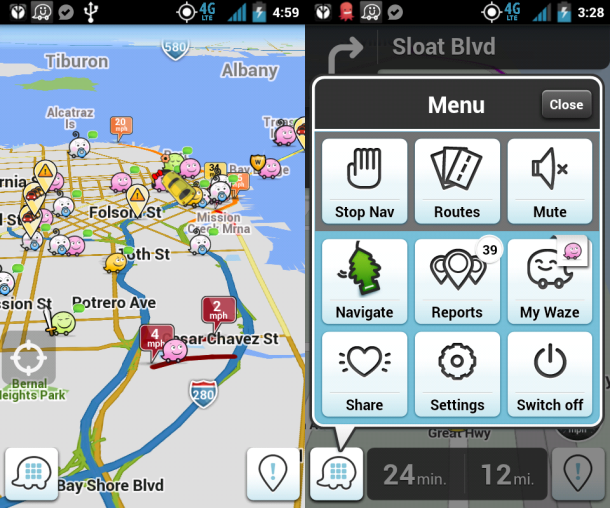The power of solving a real problem and making your users feel smarter

(originally posted on Medium)
How I’ve learned to rely on (and love) Waze
During the month of December my wife and I made our regular trips to and from family members’ houses to celebrate the various holidays. Over the past year (especially since we moved outside of the city) Waze has become a part of all our trips, even when we know exactly where we’re going because you never know when there might be an even better way to get there, but Waze does.
Thanks to all the Waze users out there, Waze (now Google) operates from this panopticon-like vantage point, knowing where all the cars are and how fast they’re moving (sidebar: in my more cynical moments, I’ve imagined how they can use this information to control the traffic, and not just respond to it but I digress…). This means that it has the information to help you get from point A to point B in the most efficient way possible based on the unpredictable real time conditions on the road, making a standard GPS (that felt pretty special only a few years ago), feel dumb.

In fact, Waze solves that core problem so well that it didn’t matter that the design has long been a hot mess of chunky lines, more buttons than you know what to do with and costumed, fleshy pink dumplings. To be fair the redesign this Fall offered some nice refinements. All that aside, the reason people love using the product (and as a result, Google loved buying the product) is because it takes a bunch of genuine pain points that everyone who’s driven a car (giant addressable audience) has experienced and makes them go away.
I’d like to call out examples of my two personal favorite features: avoiding traffic (obvs!) and sharing your trip:

Back to our travel adventures… Last month we were headed to the in-laws for Christmas, we hit bumper to bumper traffic before the Throgs Neck Bridge and Waze suggested a crazy, borderline non-sensical, looking maneuver .
Since the product has earned my trust I just went with it and found that the unorthodox move — pulling off the highway and getting right back onbefore the bridge — helped us avoid a huge chunk of stagnant traffic. We had two similar experiences that same week. Not only does the product help you get to where you’re going faster but it makes you feel like you’rein the knowalong the way — using Waze can feel nothing short of magical, almost like you’re cheating the system. That emotion is a powerful one and over time builds a really strong bond with the product. We’ve always felt that Foursquare Tips (especiallynow that you get them serendipitously) often offer that same kind of unexpected magic that makes users feel like they’re getting more out of the world around them thanks to the product.

My second most-used feature is sharing my drive. It’s a dead-simple way to, once you’ve set off on a trip, share that trip with someone else. The best part is that when they click on the link, they’ll get a map in a mobile web view with 1) a little dumpling moving its way across the map and 2) an accurate estimated ETA based on how far away they are and the traffic between them and their destination. All of this replaces the age old “What’s your ETA?” use case for all parties involved and you’ll be surprised at how nice it is to know exactly where a loved one is on a long trip to/from you as you see that plump little dumpling inch its way across the screen.

There are a bunch of other things Waze does a good job of (and many that feel superfluous ) but they’ve done an amazing job in ensuring that their core features solve real problems and in the process make their users feel more powerful — that is ultimately what building a great product is all about.
How is your product helping your users become a better version of themselves?
If you’re someone who drives, I highly recommend you give it a shot.






Discussion